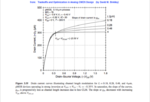malhar
Newbie level 3
hello I am working on LNA design using TSMC 90nm CMOS process. the minimum L can be taken as 0.1 um but what is the maximum value of L that can be taken for CMOS. for eg, can i use the same model for L of 0.175 um or 0.3 um ???
Follow along with the video below to see how to install our site as a web app on your home screen.
Note: This feature may not be available in some browsers.
... can i use the same [L=0.1µm] model for L of 0.175 um or 0.3 um ?
